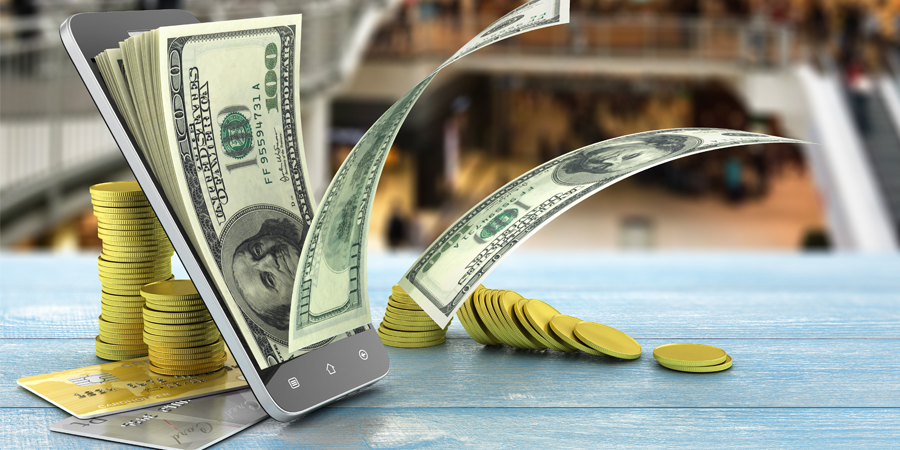In the light of the coronavirus pandemic, and with fear that the virus might be spreading through cash money, many resorted to mobile money as an alternative means to execute transactions. Governments have been encouraging people to use digital payment methods to reduce person-to-person contact and curb the spread of the coronavirus. Mobile money is a very thriving industry in Africa with platforms such as Orange Money, M-Pesa and MTN’s MoMo, to name a few.
With this new global scenario, mobile money has hit a new record. According to the GSMA, mobile money accounts have exceeded one billion worldwide. The coronavirus has given people an incentive to go digital, a fact that has been coupled with lower barriers by operators to encourage people to sign up to their mobile money platforms.
Ghana’s central bank announced that all mobile phone subscribers could open a mobile wallet and transfer up to 1,000 cedis ($170) daily without providing additional documentation.
Required documents such as ID and proof of address vary by country but can be a barrier particularly for women to open accounts, said Sabine Mensah, regional digital lead for the United Nations Capital Development Fund (UNCDF).
“It is an encouraging thing to see that in these times, when we really need to find ways to include the maximum number of people, that central banks are taking that question out of the way,” Mensah told the Thomson Reuters Foundation.
The annual ‘State of the Industry Report on Mobile Money’ by the GSMA highlights that 2019 marked a major milestone for the mobile money industry, with over one billion registered accounts and close to two billion dollars in daily transactions. For the first time, digital transactions represented the majority, 57 per cent, of mobile money interactions. The industry is witnessing increasing user trust and relevance. With 290 live services in 95 countries and 372 million active accounts, mobile money is entering the mainstream and becoming the path to financial inclusion in most low-income countries. For consumers, this marks a shift away from cash towards digital payments — for school fees, e-commerce, international remittances, savings, credit, pay-as-you-go utilities and more.
“Increased mobile connectivity and innovative services such as mobile money are building stronger and more inclusive communities,” said John Giusti, chief regulatory officer, GSMA. “Surpassing one billion mobile money accounts represents a major milestone for an industry that did not exist just over a decade ago. The reach of mobile money agents is now 20 times that of bricks-and-mortar banks. Almost 1.7 billion people remain financially excluded, but the collective strength of the industry holds the potential to ensure that everyone can be part of the new digital economy.”
The report shows that the biggest trends in 2019 were:
- A growing number of providers are becoming commercially sustainable;
- Direct revenue from mobile money is supporting investment in innovative products and services, network expansion, and healthy and sustainable agent commissions;
- The industry continues to invest in distribution networks, with the number of agent outlets almost tripling over the past five years, and the reach of a mobile money agent is now seven times that of ATMs and 20 times that of bank branches;
- The digitisation of payments has reached new heights with digital transactions representing the majority of mobile money flows (57 per cent) for the first time in 2019 (historically, majority of transactions were cash-in and cash-out); and
- More value is circulating in the mobile money system than exiting – another industry first.
The report explores the empowerment that comes with owning a mobile money account, for example, more women are using financial services, low-income households are accessing essential utility services, and smallholder farmers are getting paid more quickly and conveniently. Meanwhile, millions of migrants and their families are experiencing the life-changing benefits of faster, safer and cheaper international remittances, and humanitarian cash assistance is being delivered more thoughtfully to those in crises.
Giusti added, “Regulation that enables low-cost services for the financially excluded has been crucial to the success of mobile money, and there is a clear correlation between an enabling regulatory environment and a high mobile money adoption rate. However, certain policy decisions, such as sector-specific taxation and data localisation requirements, are putting pressure on the industry and create a real risk of long-term negative impacts on financial inclusion gains, access to innovative services, and delivery of the SDGs. We are moving in the right direction, and with the right tools, we are a step closer to achieving an inclusive digital future for all.”
Mobile money 2.0
Mobile Money 1.0 refers to digital wallets operated via a text interaction driven interface that is powered by either USSD or SIM toolkit technology present on all devices as part of the GSM standard. The service is compatible with all phones without the need to install anything or connect to the internet. This has been the trend for the past years.
For the past couple of a years, a new trend is revolutionizing the mobile money industry. Mobile Money 2.0 consists of digibanks which provide a new concept with the same digital transaction notion.
We’re entering a new era in the mobile money industry as the number of mobile money accounts reaches 1 billion worldwide. With this milestone in mind, regulations can still be tackled as one of the barriers in some countries. Perhaps the coronavirus pandemic was the catalyst, however it is the post-COVID-19 period that we should look at.






